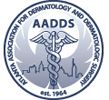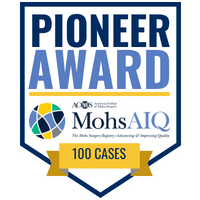 Ideally, Mohs surgeons are physicians who have completed a rigorous year-long Mohs surgery fellowship training program after three years of regular Dermatology residency training. During their fellowship year, Mohs surgeons not only gain experience removing hundreds of skin cancers but also are highly trained in wound repair techniques. These physicians then become members of the American College of Mohs Surgery (http://www.mohscollege.org/).
Ideally, Mohs surgeons are physicians who have completed a rigorous year-long Mohs surgery fellowship training program after three years of regular Dermatology residency training. During their fellowship year, Mohs surgeons not only gain experience removing hundreds of skin cancers but also are highly trained in wound repair techniques. These physicians then become members of the American College of Mohs Surgery (http://www.mohscollege.org/).
Unfortunately, some “Mohs surgeons” have circumvented the usual year-long fellowship program. They become Mohs surgery “certified” after taking a weekend course. These physicians then gain their experience in Mohs surgery by practicing on the public. They are members of the American Society of Mohs Surgery.
Under Dr. Kayal’s care at Kayal Dermatology & Skin Cancer Specialists, you can be assured that you will receive the highest quality Mohs surgery care available. Dr. John Kayal is a trained Mohs surgeon with an outstanding record of superior cosmetic results.
 Dr. John Kayal has been named a recipient of the American College of Mohs Surgery’s Pioneer Award, given to the first 25 physicians to input 100 cases into the ACMS MohsAIQ (Mohs Advancing and Improving Quality) registry. MohsAIQ provides meaningful data about patients and physician performance in order to advance the highest standards of patient care with respect to Mohs surgery and dermatologic oncology. The Pioneer Award recognizes commitment to quality and performance measurement in Mohs micrographic surgery.
Dr. John Kayal has been named a recipient of the American College of Mohs Surgery’s Pioneer Award, given to the first 25 physicians to input 100 cases into the ACMS MohsAIQ (Mohs Advancing and Improving Quality) registry. MohsAIQ provides meaningful data about patients and physician performance in order to advance the highest standards of patient care with respect to Mohs surgery and dermatologic oncology. The Pioneer Award recognizes commitment to quality and performance measurement in Mohs micrographic surgery.
MOHS MICROGRAPHIC SURGERY
Mohs Micrographic Surgery is a state-of-the-art procedure for removing certain types of skin cancers. Mohs Micrographic Surgery, an advanced treatment procedure for skin cancer, offers the highest cure rate- even on previously treated skin cancers. This precise and exact technique utilizing a microscope to track out the tumor roots is performed under local anesthesia in the office. This procedure allows Dr. Kayal to see beyond the visible disease, and to precisely identify and remove the entire tumor, leaving healthy tissue unharmed. This procedure is most often used in treating two of the most common forms of skin cancer: basal cell carcinoma and squamous cell carcinoma. In addition, many malignant melanomas are successfully treated using the Mohs surgery technique.
The cure rate for Mohs Micrographic Surgery is the highest of all treatments for skin cancer -up to 99 percent even if other forms of treatment have failed. The American College of Mohs Surgery currently recognizes more than 60 training centers where qualified applicants receive comprehensive training in Mohs Micrographic Surgery. The minimum training period is one year during which the dermatologist acquires extensive experience in all aspects of Mohs Surgery, pathology and training in reconstructive Surgery. For more information on Mohs Surgery head to http://www.mohscollege.org/
This procedure, the most exact and precise method of tumor removal, minimizes the chance of re-growth and lessens the potential for scarring or disfiguring results.
Mohs Micrographic Surgery evolved from Mohs Chemosurgery. This procedure was eveloped by Frederic E. Mohs, M.D. in the 1930s. The Mohs Micrographic Surgical procedure has been refined and perfected for more than half a century. Initially, Dr. Mohs removed tumors with a chemosurgical technique. A paste was applied to the patient and after a period of time, thin layers of tissue were excised and frozen before being microscopically examined. He developed a unique technique of color-coding excised specimens and created a mapping process to accurately identify the location of remaining cancerous cells.
As the process evolved, surgeons refined the technique and now excise the tumor, remove layers of tissue, and examine the fresh tissue immediately. The chemosurgical technique developed by Dr. Mohs is no longer used. This reduces the normal treatment time to one visit and allows for immediate reconstruction of the wound. The heart of the procedure the color-coded mapping of excised specimens and their thorough microscopic examination remains the definitive part of the Mohs Micrographic Surgical procedure.
Clinical studies have shown that Mohs Micrographic Surgery has a five-year cure rate up to 99 percent in the treatment of basal cell and squamous cell carcinomas. This high cure rate makes this a cost effective procedure.
Mohs Micrographic Surgery preserves the maximum amount of normal skin and results smaller scars. Repairs are more often simple and involve fewer complicated reconstructive procedures. The best method of managing the wound resulting from surgery is determined after the cancer is completely removed. When the final defect is known, management is individualized to achieve the best results and to preserve functional capabilities and maximize aesthetics. The Mohs surgeon is also trained in reconstructive procedures and often will perform the reconstructive procedure necessary to repair the wound. A small wound may be allowed to heal on its own, or the wound may be closed with stitches, and skin graft or a flap. If a tumor is larger than initially anticipated, another surgical specialist with unique skills may complete the reconstruction training.








